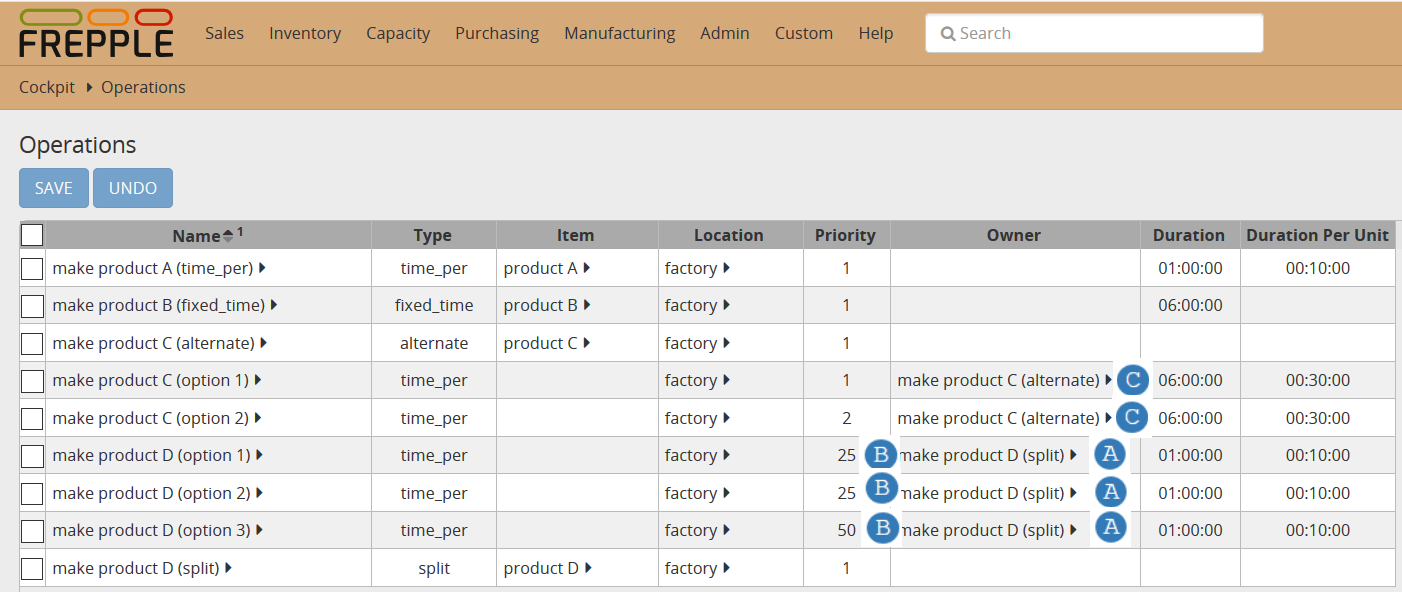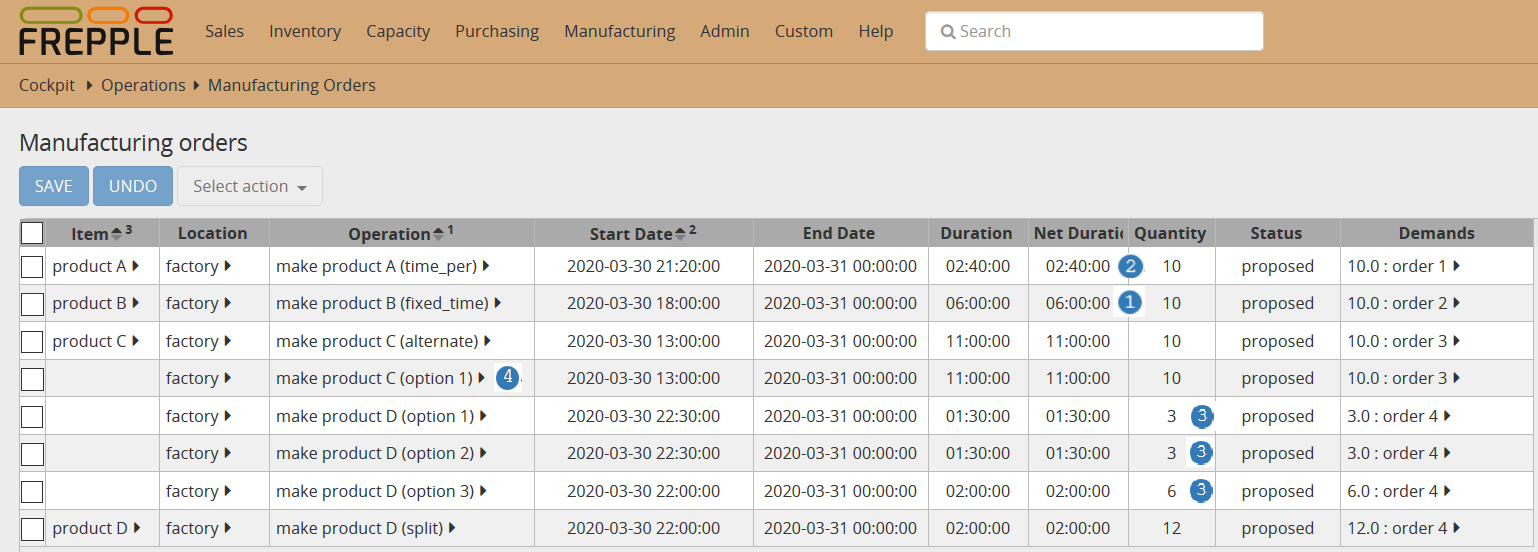Operation Type
When creating operations in frePPLe, different operation types are available and should be selected wisely depending on the expected behavior:

Fixed_time
The duration of the operation is constant, regardless of the quantity being planned.A typical example is a transport operation: transporting 1 piece with a truck takes just as long as transporting 100 pieces. Only the Duration field needs to be populated to define the duration of the fixed time operation.Time_per
The duration of the operation increases linearly with the planned quantity. The total duration takes the form of ‘A + B * quantity’, where A and B are constants. The A value corresponds to the Duration field while the B value corresponds to the Duration Per Unit field.A typical example is a production operation: there is a fixed overhead of machine setup at the start, and the actual production is linear with the quantity to produce.Split
This operation type plans the demand proportionally over a number of operations, based on pre-defined percentages. The operations for which the split should occur should define in the Owner column the split operationÀ. The percentage should be put in the Priority columnB. There is no need that the percentages sum up to 100, frePPLe will compute a percentage in the background based on the weight of each operation.Routing
This operation type represent the sequence of operations that need to be run in sequence. There is a specific example for the routing, please refer to it for more details.Alternate
This operation type represent the choice between alternate operations to achieve the same result. Another example is dedicated to this.In the majority of models you don’t have to explicitly use alternate operations in your model. FrePPLe will automatically create them as soon as there are multiple replenishment methods.The alternate operation should be set as OwnerCfor the different alternate operations. The priority can be used to have the solver pick an operation over another one.
Note that the actual duration for the operation respects the working hours and holidays periods. These are defined in the available calendar of the operation and/or its location. The time between the start and end date of a manufacturing order or distribution order will then be extended with any unavailable time.
Check this feature on a live example
Download an Excel spreadsheet with the data for this example

Fixed_time
Fixed time operations take the same amount of time regardless of the produced quantity. We can see in above screenshot that it took 6 hours1which is the Duration of the operation to produce 10 units of product B.Time_per
To produce 10 units of product A, the operation duration is equal to the Duration + 10 * Duration Per Unit. This gives 1 hour + 10 * 10 minutes = 2 hours and 40 minutes2.Split
Order 4 for product D has a quantity of 12. The split defined in the operation table is 25% for make product D (option 1), 25% for *make product D (option 2) and 50% *make product D (option 3). We can see in the manufacturing orders that the split is respected as the first 2 operations plan a quantity of 3 when the last operation plans a quantity of 63.Alternate
There are two alternate operations to produce product C. Operation make product C (option 1) has a priority of 1 and has therefore been picked by the solver as this operation could deliver on time the demand4.
